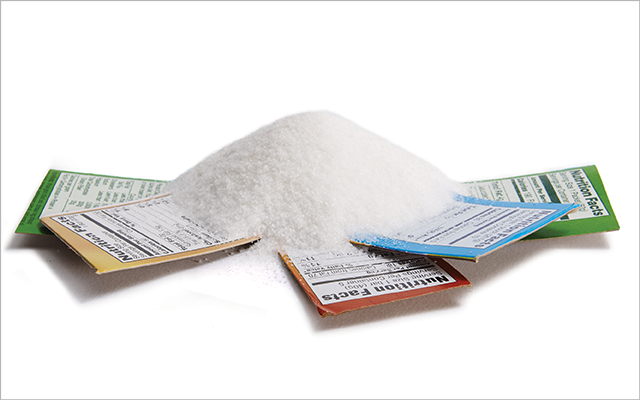Regular readers of this column might recall that last month I was encouraging you to read labels. Now I’m telling you to ignore them.
So what gives? What’s a person to do with this contradictory counsel? Which is the right advice to follow?
The correct answer, I’m sorry to say, is “both,” “neither,” and “it depends.” And that, my friends, is a pretty good metaphor for the maddening, confusing, label-reading conundrum most food consumers face on a daily basis.
You probably know by now that you can’t rely on front-of-package headlines like “heart healthy” or “contains whole grains,” “cholesterol-free,” or “zero trans fats” as wayposts to healthy choices. And as I explained last month, sometimes even the fine print on the back can steer you surprisingly wrong.
But if you aren’t looking at packaged food labels at all, or if you don’t know how to weigh and decode their messages, you are pretty much in the dark about what you are putting in your body, and that can be dangerous indeed.
Most whole-food products, including unprocessed meats, vegetables, fruits, nuts, and seeds, require no nutrition labeling, and are among the most nutritionally rich and beneficial foods you can eat. Sadly, such foods now represent a relatively small percentage of what we consume.
Studies suggest that in the United States, between 70 and 80 percent of our calories now come from highly processed packaged and prepared foods. So, practically speaking, even if you make an effort to buy and prepare mostly whole foods most of time, you’ll still want to develop some label-reading savvy.
Part of that involves knowing what to look for — namely, the presence of high-quality, whole-food ingredients combined in ways that work for your biochemistry. And part of it involves knowing what to ignore, or at least what to be skeptical about.
Whole books have been written about the deceptive industry practices that make that latter skill so important. One I recommend is Michele Simon’s Appetite for Profit: How the Food Industry Undermines Our Health and How to Fight Back.
In the interim, here’s some basic counsel you can start applying now:
1. Don’t be fooled by marketing hype. No matter how wholesome-looking the packaging, and no matter how enthusiastic the blurbs on the front of the package, statements like “mom- approved,” “50% less fat,” “contains calcium,” “paleo-friendly,” or “part of a healthy diet” do not necessarily mean that a product is good for you.
Nor does the use of one or more health claims on a product mean that it’s any better for you than a comparable one that happens to lack such claims.
Unfortunately, most consumers don’t know that, and this unknowingly creates an opportunity that food marketers are only too happy to exploit.
Research shows that health-motivated eaters are far more likely to choose foods emblazoned with front-of-package health claims, regardless of what the more detailed information on the Nutrition Facts label reveals, or what the eaters’ own common sense might suggest.
So manufacturers have every motivation to just keep on plastering their products with as many claims as the FDA will allow. Because, really, who doesn’t want some heart-healthy, fat-free, high-fiber, low-sodium, zero-cholesterol, gluten-free doughnuts?
2. Don’t rely on seals and stamps. For consumers too busy or weary to read words, there’s now a huge array of “at a glance” graphic emblems designed to signal a product’s adherence to various standards. But for these symbols to be helpful, you have to know and trust the specific standards they represent.
You also have to know to what extent you want to prioritize those characteristics in your own eating choices, and how you want to balance them against other selection criteria.
The labels for USDA Organic and the Non-GMO Project, for example, are meaningful to consumers seeking products whose ingredients meet some basic agricultural, animal-welfare, and environmental standards. But it’s important to recognize that a product can be organic and non-GMO while still being filled with sugar, salt, flour, and industrial vegetable oils, and largely devoid of nutrition.
The American Heart Association’s Heart-Check mark indicates that a product adheres to certain aspects of both the AHA’s own guidelines and the U.S. Dietary Guidelines, including minimum thresholds and upper limits for a variety of nutrients.
But some of those guidelines (especially those concerning saturated fats and dietary cholesterol) are based on questionable or outdated science. And again, the mere fact that a product is low in sodium, or high in fiber, or made with whole grains, doesn’t really offer much indication of its overall healthfulness — or, conversely, its potential to inflict inflammatory damage over time.
The AHA’s Heart-Check mark has infamously graced unhealthy products like Froot Loops cereal and Pop-Tarts. The food industry’s now-defunct Smart Choices label originally appeared on Cracker Jack packages.
Such labeling schemes have been widely accused of catering more to the interests of food-industry funders than to the consumers they were supposedly meant to serve. And this brings me to my final tip.
3. Think for yourself. In a food world as complicated as ours, it’s tempting to depend on shorthand indicators about what is or is not a wise thing to eat. And research suggests that “restrained eaters” (people who are restricting calories, carbs, or fats, or trying to follow some other dietary plan) may be at a special disadvantage in this regard.
According to a 2014 paper published in the journal Health Communication: “Restrained eaters exhibit significant differences versus unrestrained eaters in the performance of cognitive tasks, with restrained eaters exhibiting lower levels of sustained attention, recall, and working memory compared to unrestrained eaters.”
The authors posit that trying to maintain a high level of dietary self-control depletes not only one’s willpower but also one’s mental capacity. Being worn out from all that dietary hypervigilance, they suggest, leaves us more inclined to rely on simplistic claims, seals, and graphic cues — and thus more vulnerable to being misled.
One of the central messages of 101 Ways to Be Healthy (and this “Revolutionary Acts” column) is that, as a health-seeking person in a health-sapping world, you cannot afford to become passive and complacent.
On the contrary, you must stay aware, alert, and resilient. Because unless you actively cultivate your resistance to the Unhealthy Default Reality in which we live, you risk being sucked into it.
With that in mind, after three years and 37 columns, “Revolutionary Acts” will soon be replaced with a new column: “The Living Experiment.” It debuts in January 2018.
An extension of the top-rated podcast my friend Dallas Hartwig and I cohost each week, this new column will continue to explore the revolutionary challenges of being healthy in an unhealthy world, but from an even broader perspective. Our hope is that it will offer you some energizing, rewarding new ways to keep going with that experimental endeavor, even when the going gets tough.




This Post Has 0 Comments